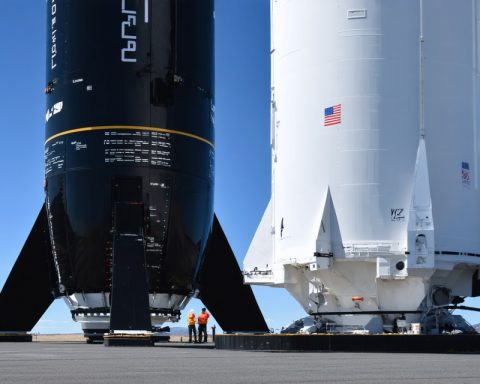A Audi, renomada por sua linha de carros esportivos e SUVs, mais uma vez empurra os limites da tecnologia e desempenho. Desta vez, eles elevaram sua habilidade off-road a um novo patamar ao apresentar sua primeira bicicleta elétrica de montanha em colaboração com os especialistas italianos em bicicletas elétricas, Fanatic Motors.
Inspirada no impressionante carro de rally RS Q e-tron da Audi, a Bicicleta Elétrica de Montanha da Audi oferece uma combinação vencedora de estilo e funcionalidade. A bicicleta possui uma estrutura parcial em carbono leve de alumínio, incorporando um motor elétrico alimentado por uma bateria de íons de lítio de 36 volts. Com uma velocidade máxima de 15,5 mph, esta bicicleta elétrica de montanha oferece aos ciclistas uma experiência emocionante, combinando a conveniência e eficiência da assistência elétrica.
O que diferencia a Bicicleta Elétrica de Montanha da Audi é sua versatilidade. Ela é projetada para passeios e desafios em terrenos difíceis, tornando-se uma companheira ideal para ciclistas aventureiros que buscam a emoção de pedalar fora da estrada. A bicicleta vem equipada com um sistema de suspensão completa, pneus largos de trilha grossa e um sistema de freio a disco, permitindo que os ciclistas naveguem com confiança por várias paisagens.
Com cinco modos de assistência diferentes (Desligado, Eco, Passeio, Esporte e Impulso), os ciclistas têm a flexibilidade de escolher o nível de suporte desejado, dependendo de seu nível de habilidade e terreno. Se você está ansioso por um passeio tranquilo por trilhas cênicas ou empurrando os limites em pistas desafiadoras de downhill, a Bicicleta Elétrica de Montanha da Audi oferece a combinação perfeita de desempenho e controle.
A nova Bicicleta Elétrica de Montanha da Audi está disponível em três tamanhos – S, M e L – atendendo a ciclistas de todas as alturas. Com preço de $9,500 (excluindo impostos), esta e-bike de última geração representa o compromisso da Audi com a inovação, aventura e busca pela excelência. Portanto, prepare-se e esteja pronto para experimentar a emoção de explorar a natureza como nunca antes, com a mais recente oferta da Audi que combina tecnologia de ponta com o espírito aventureiro.
A introdução da Bicicleta Elétrica de Montanha da Audi é um desenvolvimento significativo na indústria de bicicletas elétricas. À medida que o mercado de e-bikes continua a crescer, os consumidores estão exigindo opções mais inovadoras e de alto desempenho. A entrada da Audi no mercado é um testemunho da crescente popularidade das bicicletas elétricas e do potencial que elas possuem para o futuro.
A indústria de bicicletas elétricas tem experimentado um crescimento constante nos últimos anos e espera-se que essa tendência continue. Segundo um relatório da Grand View Research, o tamanho do mercado global de e-bikes deverá atingir $38,6 bilhões até 2027, com uma taxa de crescimento anual composta de 7,9% de 2020 a 2027. Fatores como aumento da conscientização ambiental, iniciativas governamentais que promovem a mobilidade elétrica e aprimoramentos em tecnologias de bateria impulsionam o crescimento do mercado.
Uma das principais questões relacionadas à indústria de bicicletas elétricas é a infraestrutura limitada para carregar as e-bikes. Ao contrário das bicicletas tradicionais, as bicicletas elétricas requerem carregamento para funcionar. Portanto, a disponibilidade de estações de carregamento e sua acessibilidade são fatores cruciais para a adoção das e-bikes. Esforços estão sendo feitos por governos e empresas privadas para expandir a rede de estações de carregamento e atender ao crescente número de usuários de bicicletas elétricas.
Outro desafio enfrentado pela indústria é a percepção de que as bicicletas elétricas são caras. A Bicicleta Elétrica de Montanha da Audi, com preço de $9,500, está dentro da faixa de preço mais alta do mercado. No entanto, com avanços tecnológicos e economias de escala, espera-se que as e-bikes se tornem mais acessíveis no futuro, tornando-as acessíveis a uma gama mais ampla de consumidores.
Para obter mais informações sobre a indústria de bicicletas elétricas e previsões de mercado, você pode visitar sites confiáveis como o Grand View Research ou Bike-EU. Essas fontes fornecem insights valiosos sobre as tendências da indústria, perspectivas de crescimento e desafios, ajudando consumidores e empresas a se manterem informados sobre os últimos desenvolvimentos no mercado de e-bikes.











